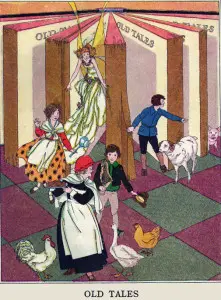 Originally, I had intended to write an article recounting my interest in American primers and first readers, along with Kathy McMillan’s influence and knowledge. I asked her a few questions, and she came back with an illustrated supremely interesting full article that I did not want to disturb with my newly acquired insights. It was a wonderful look at how she came to love these text books for tots, and I left it the way it was, with very little editing. But that meant all my collecting and assemblage of books would go for want! I’m not sure what, if anything, I can bring to the discussion, but I do want to explore my newly found love of the illustrations within primers from the teens, 20s, and 30s. And to tip my invisible hat–Kathie and a couple of other members of flickr whetted my appetite to explore primers, whereas I had dismissed them as drivel before. ( yes, I am that snotty)
Originally, I had intended to write an article recounting my interest in American primers and first readers, along with Kathy McMillan’s influence and knowledge. I asked her a few questions, and she came back with an illustrated supremely interesting full article that I did not want to disturb with my newly acquired insights. It was a wonderful look at how she came to love these text books for tots, and I left it the way it was, with very little editing. But that meant all my collecting and assemblage of books would go for want! I’m not sure what, if anything, I can bring to the discussion, but I do want to explore my newly found love of the illustrations within primers from the teens, 20s, and 30s. And to tip my invisible hat–Kathie and a couple of other members of flickr whetted my appetite to explore primers, whereas I had dismissed them as drivel before. ( yes, I am that snotty)
When thinking of readers, most of my generation picture Dick and Jane. See Jane run. See Dick run after Jane. See Jane file a sexual harassment suit. You get the picture. The baby boomer generation read almost exclusively from these texts. First issued in the 1940s, they became the standard for a couple of decades. The iconic white upper middle class family with blond Jane, two Leave It To Beaver Parents, a dog, Spot, a cat–named Speck(?) I don’t remember, and a little sister also quite fair haired represented the 1950s–at least for the middle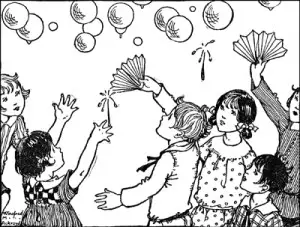 class anglo saxon inhabitants who believed they were the only people who counted. It wasn’t until the mid-sixties that black individuals were represented. I’ve no idea if any other minority graced the primer pages—I was well past the learning to read stage by then.
class anglo saxon inhabitants who believed they were the only people who counted. It wasn’t until the mid-sixties that black individuals were represented. I’ve no idea if any other minority graced the primer pages—I was well past the learning to read stage by then.
As much as I enjoy the primary color illustrations found within these texts, I much prefer the Deco ones accompanying books my mother and father had in school, and if I go even further, the teens would probably have been the time my grandmother learned to read. These primers didn’t include minorities either, unless you count the occasional story about ‘Indians’ or ‘Eskimos’ and their habitats. From what I gathered from skimming the stories within, most dealt with wayward dogs, fairy tales, watered down history, and the occasional biblical reference. There was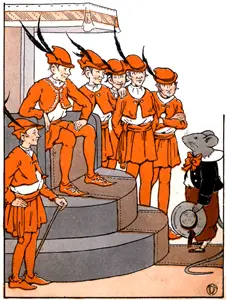 very little separation of church and state at that point in time. An aside–little known fact–my mother never uttered the words, Under God, when saying the pledge of allegiance. Because the author did not include it in his pledge. We boomers were the first to use that phrase as an attack against communism, Eisenhower degreed it be altered to include God, to show those commies whom they were dealing with–a God loving, fearing, country. That and 30 or 40 odd years brought their evil empire to its knees. Now, we are stuck with it. One whisper it should be removed is met with screams of outrage, most people clueless from whence the damn pledge came from. And why pledge at all? It smacks of a tyrannical state, demanding one pledge their solemn allegiance– the writer of the pledge did not intend for it to be used that way, at least, so I’ve heard. Anyway. . . .
very little separation of church and state at that point in time. An aside–little known fact–my mother never uttered the words, Under God, when saying the pledge of allegiance. Because the author did not include it in his pledge. We boomers were the first to use that phrase as an attack against communism, Eisenhower degreed it be altered to include God, to show those commies whom they were dealing with–a God loving, fearing, country. That and 30 or 40 odd years brought their evil empire to its knees. Now, we are stuck with it. One whisper it should be removed is met with screams of outrage, most people clueless from whence the damn pledge came from. And why pledge at all? It smacks of a tyrannical state, demanding one pledge their solemn allegiance– the writer of the pledge did not intend for it to be used that way, at least, so I’ve heard. Anyway. . . .
The illustrations are so simple in design, yet convey exactly what is necessary for the child to understand what is written before them. In my 1927 edition of Elson Readers, Book Three the contents are split up thusly:
Fables and Folk Tales
Brownies and Fairies
Children
Legends
Holidays (yes, kids were allowed to celebrate them back then, including Halloween, costumes and all)
Home and Country
Heroes of Long Ago
The Outdoor World
Old Tales
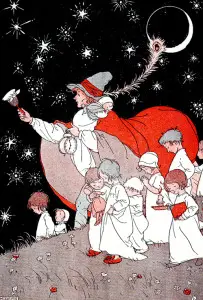 I would have thought fables, folk tales, legends, and old tales would be one in the same, but apparently not. The book begins with a Robert Louis Stevenson poem, and continues on with animal stories, a play called ‘The Simpleton’, and a gross politically incorrect, and rightfully so, story –‘The Tar Baby’. Although the contents page has the stories broken into those subcategories, no such break exists within the pages–so the reader goes right into Brownies and Fairies without realizing they’ve moved on. The stories are sort, but not Sesame Street attention deficit short. An no where near as simple as Dick and Jane–but since this is book three–I assume it’s of a higher level than first beginning to read. There are one quarter page illustrations liberally scattered throughout, with a few half and full page ones. All in a limited color palate. This 1927 text’s printing has more color inks however, than many others of the same or earlier date. The ‘I Like-To-Do Stories’, 1923, illustrated by Kate Deal, has black and white throughout, with one semi color frontis piece. But oh, what beautiful Deco inspired line drawings they are! Delicate renderings of children in their daily lives, Santa, and various animals breathe magic into learning how to read. Only two tone illustrations are included in ‘A Journey To Health Land’, a book serving dual purposes, to teach hygiene and reading. Various shades of orange and
I would have thought fables, folk tales, legends, and old tales would be one in the same, but apparently not. The book begins with a Robert Louis Stevenson poem, and continues on with animal stories, a play called ‘The Simpleton’, and a gross politically incorrect, and rightfully so, story –‘The Tar Baby’. Although the contents page has the stories broken into those subcategories, no such break exists within the pages–so the reader goes right into Brownies and Fairies without realizing they’ve moved on. The stories are sort, but not Sesame Street attention deficit short. An no where near as simple as Dick and Jane–but since this is book three–I assume it’s of a higher level than first beginning to read. There are one quarter page illustrations liberally scattered throughout, with a few half and full page ones. All in a limited color palate. This 1927 text’s printing has more color inks however, than many others of the same or earlier date. The ‘I Like-To-Do Stories’, 1923, illustrated by Kate Deal, has black and white throughout, with one semi color frontis piece. But oh, what beautiful Deco inspired line drawings they are! Delicate renderings of children in their daily lives, Santa, and various animals breathe magic into learning how to read. Only two tone illustrations are included in ‘A Journey To Health Land’, a book serving dual purposes, to teach hygiene and reading. Various shades of orange and
black delight the eye as we visit Grimy Joe Town and learn about clean hands, Lollipop Town, where visions of the dental chair dance in our dreams, and we meet Frankie Fuss whose demeanor is an upside-down smile. Frankie is a cautionary tale of being unpopular because of being ‘fussy’. That’s one odd word for it! And an unusual health hazard.
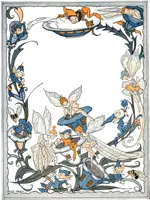
These are a tiny sliver of primers that were published during those three decades. As I continue to find them hither and thither, I care not about condition, as I would with first class illustrated and crime fiction books. These beat up volumes are for the pictures only, and even some of them can be missing so long as the price is under 6 bucks. I will not be driven to pay 15 to 20 bucks for a darn primer. As much as I love the art within, their value is not on par with as beautifully turned out Anne Anderson ‘Mother Goose’, or W. Heath Robinson ‘Uncle Lubin’. There is simply no comparison, nor should there be. the artists assigned to these texts knew what their job was and they did it with the least fuss, intricate design, and color as possible and still represent in a engaging lovely way what was contained within. And they must have succeeded, considering the ‘greatest generation’ was educated with exactly these texts. And that’s saying something.
